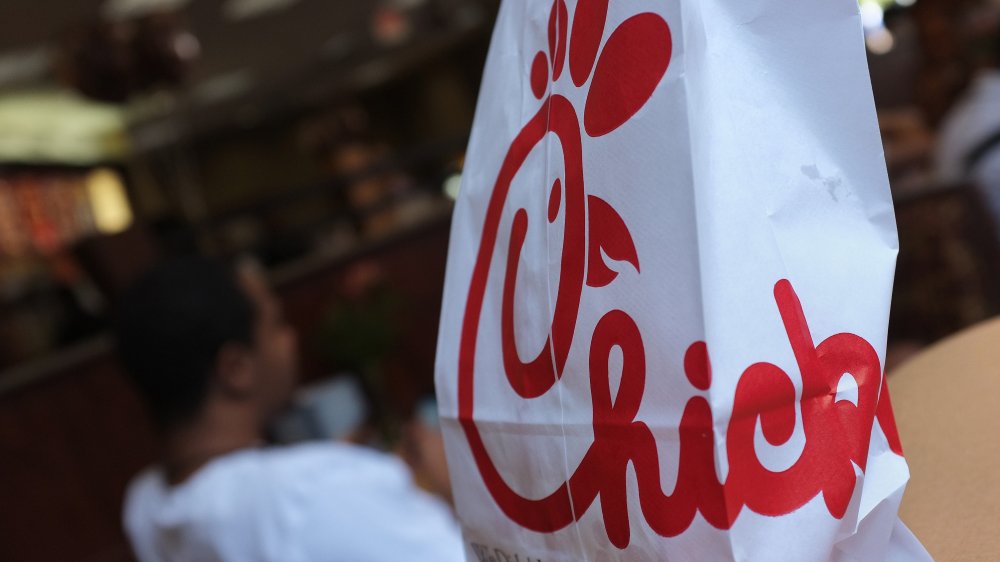The Ingredient You'd Be Surprised Is In The Chick-Fil-A Sandwich You're Eating
Chick-fil-A has something of a cult following — any restaurant chain that is able to entice its customers to dress up like cows in exchange for free food is doing something right.
Of course, the menu item that started the whole empire is their original chicken sandwich, a boneless, skinless chicken breast on a buttered bun with two pickles. While this seems like it would have a simple enough recipe, there are actually dozens of ingredients listed by the website for its trademark sandwich (via Chick-fil-A).
Among those ingredients is MSG, or monosodium glutamate. While MSG is often associated with Chinese food, it's used in foods as varied as Doritos and Campbell's chicken noodle soup (via Healthline).
MSG takes the world (and Chick-fil-A) by storm
MSG was discovered by a Japanese chemist named Kikunae Ikeda more than 100 years ago (via Smithsonian). Ikeda was attempting to create a compound that artificially creates the uniquely Japanese flavor of umami, best described as an earthy and meaty savory flavor that doesn't fall under the categories of bitter, salty, sweet, or sour (via HuffPost).
Seaweed has long been used to create an umami flavor in Japanese cuisine, and Ikeda experimented with allowing the naturally occurring liquids in the seaweed to evaporate. After a few days, the seaweed produced crystals, which Ikeda tasted and recognized as the umami flavor he was trying to produce. The chemical compound he isolated was glutamic acid, which can be found in meats as well as non-meat items like tomatoes and Parmesan cheese.
Is the MSG in your Chick-fil-A sandwich really that bad?
The Food and Drug Administration estimates that the average American consumes around 13 grams of naturally-occurring glutamic acid every day from the portions in food. A year after his original discovery, in 1909, Ikeda began the mass-production of the compound by fermenting vegetable proteins, and the brand was called "Ajinomoto" which translates to "essence of taste." It was used widely in Japanese kitchens to add a meaty flavor to dishes or to simply deepen the flavor.
MSG has long carried negative connotations, however, and some people claim that they're allergic to it. While it's acknowledged that "a small subset of people do have negative reactions that are directly due to glutamate," recent arguments have been made that the crusade against MSG has more to do with racism and xenophobia than science (via FiveThirtyEight).
Like so many other foods we consume, MSG is added to dishes as familiar as the Chick-fil-A chicken sandwich simply as a flavor enhancer — not a culinary bogeyman.


